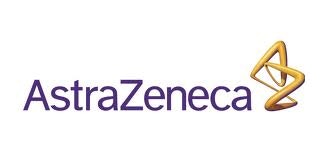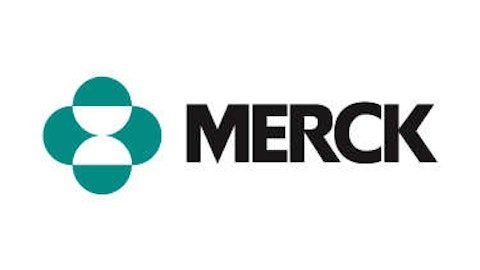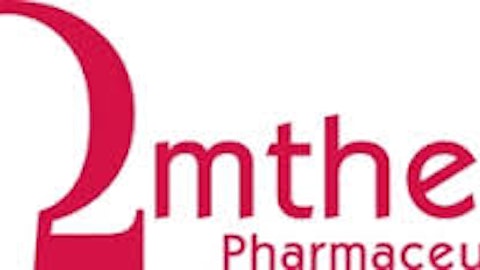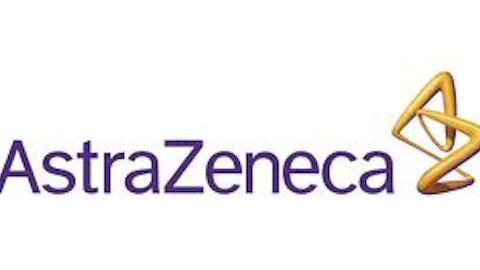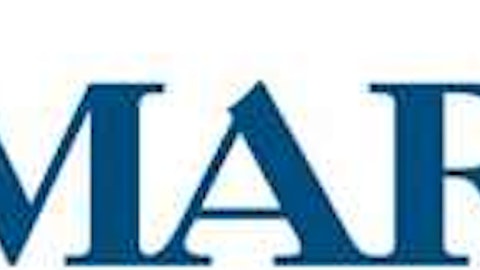LONDON — A popular way to dig out reasonably priced stocks with robust growth potential is through the “Growth at a Reasonable Price,” or GARP, strategy. This theory uses the price-to-earnings to growth ratio to show how a share’s price weighs up in relation to its near-term growth prospects — a reading below 1 is generally considered decent value for money.
Today I am looking at AstraZeneca plc (ADR) (NYSE:AZN) to see how it measures up.
What are AstraZeneca’s earnings expected to do?
| 2013 | 2014 | |
|---|---|---|
| EPS Growth | -19% | -5% |
| P/E Ratio | 9.9 | 10.4 |
| PEG Ratio | n/a | n/a |
Source: Digital Look.
AstraZeneca plc (ADR) (NYSE:AZN) is expected to post further earnings declines both this year and next, following on from 2012’s 12% earnings per share drop.
As a consequence the pharma play does not offer a valid PEG rating during the next two years. The firm does, however, boast a price-to-earnings to growth ratio below the value benchmark of 10 for this year, although this is expected to edge above the threshold in 2014.
Does AstraZeneca provide decent value against its rivals?
| FTSE 100 | Pharmaceuticals & Biotechnology | |
|---|---|---|
| Prospective P/E Ratio | 16.9 | 76 |
| Prospective PEG Ratio | 4.7 | 2.5 |
Source: Digital Look.
Although AstraZeneca plc (ADR) (NYSE:AZN) cannot be compared with the average of its FTSE 100 and pharmaceuticals counterparts on a PEG basis, at face value the company does appear cheap in terms of its P/E rating.
Still, I believe that it is worth comparing the firm with GlaxoSmithKline plc (NYSE:GSK), as a cluster of firms distort the entire pharma sector’s readings. GlaxoSmithKline, which is expected to post EPS growth of 4% this year, carries a P/E rating of 14.5 and a PEG rating of 3.6. Although these metrics preclude GlaxoSmithKline plc (NYSE:GSK) from being considered a GARP stock, it has a decent product pipeline to deliver longer-term growth which AstraZeneca does not.
Indeed, AstraZeneca plc (ADR) (NYSE:AZN)’s low rating can be attributed to fears over patent expiries, which are expected to last over the medium term at least. This not only rules out the firm as a viable GARP play, but the issue puts the firm at jeopardy of strong earnings pressure well into the future.
Customizable conclusion
AstraZeneca plc (ADR) (NYSE:AZN) has come under relentless pressure in recent years as its stable of products have lost patent protection.
Last week, the U.S. authorities issued a temporary injunction banning the distribution of generic versions of the firm’s Pulmicort Repsules medicine, which is used to combat asthma, after AstraZeneca plc (ADR) (NYSE:AZN) appealed against an earlier ruling that rendered its patent invalid. But the company is fighting a losing battle as its drugs portfolio come under increasing attack.
The loss of exclusivity in key regional markets for its Seroquel IR, Atacand and Crestor products in quarter one were decisive factors in AstraZeneca’s 12% revenues fall, to $6.4 billion, a result that pushed profit before tax 31% lower to $1.3 billion. The pharma giant has announced massive transformation plans to boost R&D and deliver future growth, but this is expected to take years to turn the company’s fortunes around.
The article How AstraZeneca Measures Up as a GARP Investment originally appeared on Fool.com.
Fool contributor Royston Wild has no position in any stocks mentioned. The Motley Fool recommends GlaxoSmithKline plc (NYSE:GSK).
Copyright © 1995 – 2013 The Motley Fool, LLC. All rights reserved. The Motley Fool has a disclosure policy.
